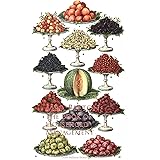Have you ever truly considered what happens to your waste once it leaves your home? In many parts of the world, landfills are overflowing, causing significant environmental damage. However, as the accompanying video brilliantly illustrates, nations like Sweden are pioneering a remarkably effective approach to **sustainable waste management**, transforming refuse into a valuable resource rather than a problem. This model demonstrates how a commitment to the circular economy can drastically reduce environmental impact and foster a more sustainable future.
The Swedish Vision: From Waste to Resource
Sweden’s journey towards exemplary waste management is not an overnight success story. It is the culmination of decades of strategic legislation, public education, and innovative technological advancements. The fundamental philosophy driving this success is viewing waste not as something to be discarded, but as a resource waiting to be repurposed. This proactive approach significantly minimizes the amount of waste destined for landfills, prioritizing prevention, reuse, and recycling at every turn.
Martin Dyberg aptly highlights the critical urgency of this shift. He reminds us that while we often consume resources as if we have multiple planet Earths, the reality is that we possess only one. This powerful analogy underscores the imperative to recycle more, reuse items extensively, and proactively prevent waste from occurring in the first place. Sweden’s national commitment to these principles serves as an inspiring blueprint for global environmental stewardship.
Building a Circular Economy Through Strategic Policies
A core tenet of Swedish **sustainable waste management** is the aggressive pursuit of a circular economy. This economic model aims to eliminate waste and the continual use of resources by keeping products and materials in use for as long as possible. Rather than a linear “take, make, dispose” system, Sweden embraces a restorative and regenerative design. This involves a comprehensive framework of laws and regulations specifically designed to minimize landfill usage, which has been remarkably successful.
For instance, Sweden has implemented stringent regulations on waste disposal, effectively banning most organic waste from landfills. This strategic legislative push acts as a strong incentive for municipalities and industries to invest in alternative solutions. Furthermore, continuous citizen education remains a cornerstone, empowering individuals to become active participants in the waste management system. Empowered citizens play a pivotal role, making informed decisions daily that collectively reduce the nation’s environmental footprint.
Innovative Solutions for Household Waste
Sweden’s success story is vividly demonstrated by a striking statistic: less than 1% of household waste in the country ends up in landfills. This achievement is not just about efficient recycling; it involves a holistic system that encompasses everything from consumer behavior to advanced processing technologies. This comprehensive system ensures that almost every piece of refuse is either recycled, reused, or converted into energy.
The Power of Deposit Systems and Public Participation
One of the most visible and effective tools for increasing recycling rates is the Swedish deposit system. This clever incentive-based program encourages consumers to return plastic bottles and aluminum cans. When purchasing a beverage, a small fee is added to the price, which is then fully refunded when the empty container is deposited at a designated station. This simple yet highly effective mechanism ensures a high return rate, directly feeding these materials back into the recycling stream.
This system highlights a key principle: making responsible choices easy and rewarding for citizens. The direct financial incentive, no matter how small, coupled with readily available deposit stations, integrates recycling seamlessly into daily life. It transforms what could be perceived as a chore into a routine act of environmental responsibility.
Advanced Textile Sorting: Siptex Leads the Way
Beyond traditional recycling, Sweden is also at the forefront of tackling complex waste streams like textiles. The world’s first large-scale facility for automatic textile sorting, Siptex, is located in the south of Sweden. This groundbreaking facility sorts an astonishing 24,000 tonnes of textiles every year. Using advanced optical sorting technology, Siptex can identify and separate different types of fibers, allowing them to be reused for new purposes.
Textile waste has historically been a significant challenge due to the complex mix of materials and dyes used in clothing. Siptex’s innovation is crucial for increasing circularity in the textile value chain, preventing vast amounts of clothing from ending up in landfills or being incinerated. It represents a significant leap forward in making the fashion industry more sustainable, paving the way for truly circular clothing production.
Transforming Organic Waste into Green Energy
Organic waste, such as food scraps and garden trimmings, presents both a challenge and an opportunity. When organic material decomposes in landfills, it releases methane, a potent greenhouse gas. Sweden has found a brilliant solution to this problem, converting a significant portion of its organic waste into valuable resources.
Approximately 40% of Sweden’s organic waste is converted into biogas. This renewable energy source can then be used as fuel for transport, powering vehicles and contributing to a greener public infrastructure. Furthermore, the process yields biofertilizer, which is returned to local farms to enrich arable land. This creates a closed-loop system where food waste nourishes the soil, helping to grow more food.
Linköping’s Green Bag System: A Model for Cities
The city of Linköping offers a compelling example of how this organic waste transformation works at a municipal level. As Johan Böök explains, Linköping views waste as a valuable resource. Households are encouraged to sort their food waste and place it into distinctive green bags. These bags are then transported to an optical sorting facility, where they are automatically separated from other refuse.
The sorted green bags proceed to a biogas facility, where the organic material is digested to produce biogas. This biogas is then upgraded to vehicle fuel, distributed as both compressed and liquefied biogas. Moreover, the by-product of this process, biofertilizer, is distributed to local farmers, enriching their fields. This integrated approach ensures that waste generates energy and supports local agriculture, embodying the essence of **sustainable waste management**.
Waste-to-Energy: The Final Link in the Chain
Despite all efforts in prevention, reuse, and recycling, some waste simply cannot be recycled due to toxic components or impurities. For this residual waste, Sweden employs highly efficient waste-to-energy facilities. These advanced plants recover the energy contained within the waste, converting it into electricity, heating, or even district cooling. This process, known as incineration with energy recovery, is a carefully controlled method that minimizes emissions and maximizes resource utilization.
By using waste that would otherwise go to landfill to generate energy, Sweden further reduces its reliance on fossil fuels and contributes to its renewable energy targets. This comprehensive system demonstrates a commitment to extracting maximum value from every piece of material, ensuring that even what seems like the most problematic waste finds a productive purpose. Sweden’s strategic approach to **sustainable waste management** offers a powerful example of environmental innovation and responsible resource stewardship for the global community.











